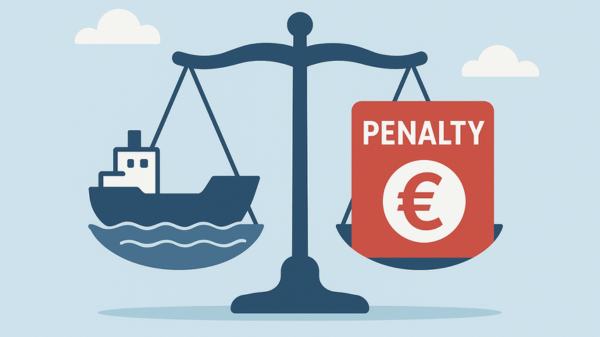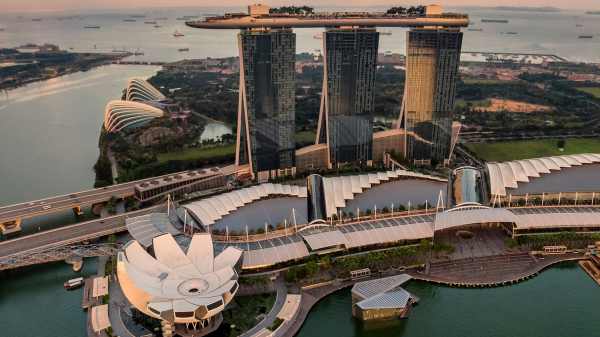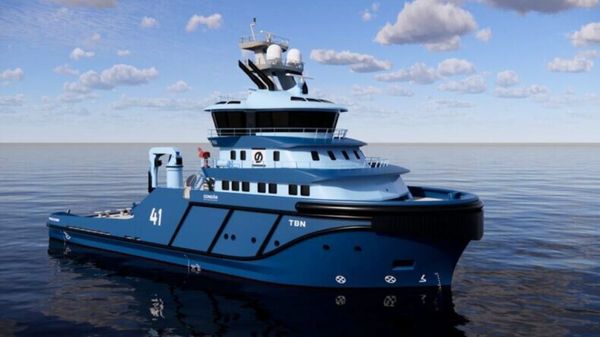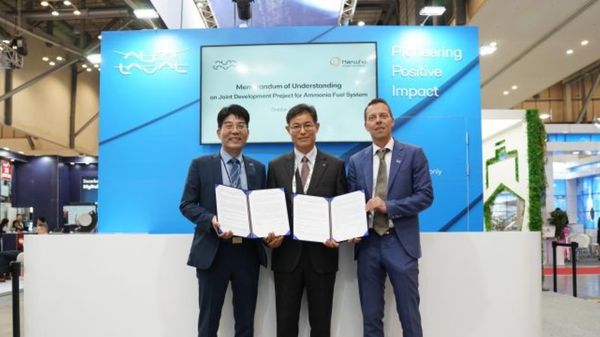Cargo throughput at the
Port of Hamburg dipped by 1 percent to 130.9 million tonnes in 2012. General cargo throughput, at 91.5 million tonnes, was just below the previous year‘s figure (- 1.2 percent). Bulk cargo throughput also remained just below the 2011 total at 39.4 million tonnes (- 0.4 percent).
Total container handling in Hamburg was slightly lower (- 1.7 percent) at 8.9 million TEU (20-ft standard containers). With this result, Hamburg remains the second largest container port in Europe and is in 14th place amongst container ports worldwide.
According to the Port of Hamburg, the reluctance to consume and invest in Europe in the second half of 2012 especially affected throughput of imported goods. At 73.9 million tonnes, these were down by 3 percent. In contrast, exports by sea, at 57.1 million tonnes (+ 1.9 percent), once again increased. This positive trend was said to be due to uninterrupted worldwide demand for German products, amongst other factors.
In total 3.8 million loaded export containers (TEU) were handled in Hamburg during 2012, which represents 4.4 percent growth in comparison with the previous year. The positive throughput trend on exports compensated for a 3.6 percent downturn in imports of loaded containers, which reached a volume of 3.8 million TEU. The slight (- 1.7 percent) downturn in total container throughput to 8.9 million TEU was primarily attributed to lower throughput of empty boxes. At 1.2 million empty containers (TEU), total handling in this segment was 12.1 percent lower than in 2011.
With the exception of Asia, the Port of Hamburg succeeded in boosting container traffic with all other continents. Asian trade traditionally has significant importance for the Port of Hamburg. The 8.6 percent downturn in this trade to 4.7 million TEU made a corresponding impact on the Port of Hamburg’s total container throughput. Lower Asia traffic was explained by the problematical economic environment in Europe, the lack of a 'peak season' for Christmas in 2012, and a cooling off in Chinese foreign trade.
Container throughput with China (including Hong Kong), Hamburg‘s leading trade partner in container traffic, was distinctly weaker in 2012 at 2.6 million TEU (- 12.3 percent). Steep growth in container throughput with India (+ 7.1 percent), which in direct traffic with Indian ports reached 210,000 TEU in 2012, was not sufficient to compensate for the drop in the China trade.
In 2012, Europe as Hamburg’s second largest container trade after Asia, reported an advance of 6.1 percent to 2.7 million TEU. Container traffic with the United Kingdom was strongly ahead at 156,000 TEU (+ 30.2 percent), while container throughput with Russia as the Port of Hamburg’s second-ranking trading partner reached 675,000 TEU (+ 13.3 percent). Trade with Finland was slightly down at 334,000 TEU (- 0.6 percent), with Poland at 263,000 TEU achieving an increase of 10.6 percent.
A further core region for the Port of Hamburg’s container traffic is the America trade with a total of 1.1 million TEU. The United States achieved notable growth of 28.1 percent to 380,000 TEU, reaching fourth position among Hamburg’s main trading partners for container handling. The trend was also positive for container traffic with the West Coast of South America, which grew by 8.8 percent, reaching 120,000 TEU. Container throughput with ports on the East Coast of South America, however, remained 7.8 percent below the previous year’s figure at 279,000 TEU. Container trade with Africa achieved a positive result at 238,000 TEU (+ 12.8 percent). The Port of Hamburg’s volume on container throughput with ports in the Australia/Pacific trade reached 43,000 TEU (+ 15.8 percent).
At 2.1 million tonnes, non-containerized general cargo throughput was 15.6 percent lower than the previous year. While exports of conventional cargo, at 1.4 million tonnes, were satisfactory (+ 0.1 percent), imports were much lower at 730,000 tonnes (- 34.6 percent). The positive trend in exports of general cargo was said to be primarily due to exports of vehicles and paper.
In 2012, throughput of bulk cargoes was stable at 39.4 million tonnes (- 0.4 percent), just below the previous year’s figure. Whereas exports of bulk cargoes, at 9.9 million tonnes, were ahead by 4.6 percent in 2012, at 29.5 million tonnes the volume of imports in this segment was 2.0 percent down on the previous year. On the export side, at 4.2 million tonnes throughput, liquid cargoes achieved a growth of 11.6 percent. With total exports of 2.5 million tonnes, throughput of suction cargoes was 2.4 percent higher. Bulk goods imports, at 9.1 million tonnes, consisted mainly of iron ore, which produced a growth of 8.0 percent. In the liquid cargo segment, oil imports produced an increase of 7.0 percent, at 4.4 million tonnes.
Commenting on the results,
Claudia Roller, CEO of Port of Hamburg Marketing, said: “We can be satisfied with the trend on the Port of Hamburg’s handling of exports. This illustrates once again the high standing German products enjoy abroad and underlines what a significant role in German foreign trade falls to the Port of Hamburg. Yet we do not wish to gloss over the total result, for the economy in Europe needs to recover and to generate an increased willingness to consume and invest. With demand again picking up in Europe and foreign trade gathering strength in our most significant markets abroad, for 2013 growth in total throughput can be expected for the Port of Hamburg. Yet the favourable development of the port is also very largely dependent on the implementation of outstanding infrastructure projects, as for example the deepening of the navigation channel of the Lower and Outer Elbe that is so urgently anticipated by the port business community and by industrial shippers."
Frank Horch, Hamburg’s Minister of Economics, Transport and Innovation remarked: "The Port of Hamburg is splendidly situated. The foundation underpinning its long-term success remains stable. Its outstanding location in terms of transport geography between the North Sea and the Baltic, the immense economic strength of its metropolitan region and the excellent quality of its port and traffic infrastructure contribute to this. Port of Hamburg policy must be directed at long-term trends and may not be led astray by short-term fluctuations in the economy.”
Wolfgang Hurtienne, CEO of the Hamburg Port Authority (HPA), said he was also looking to the infrastructural strengths of the Port of Hamburg: "In 2012 we proved able to almost repeat the Port Railway’s best-ever result of 2011. In recent years we have made very great progress in several respects. The expansion of the Port Railway continues to be accorded top priority."










